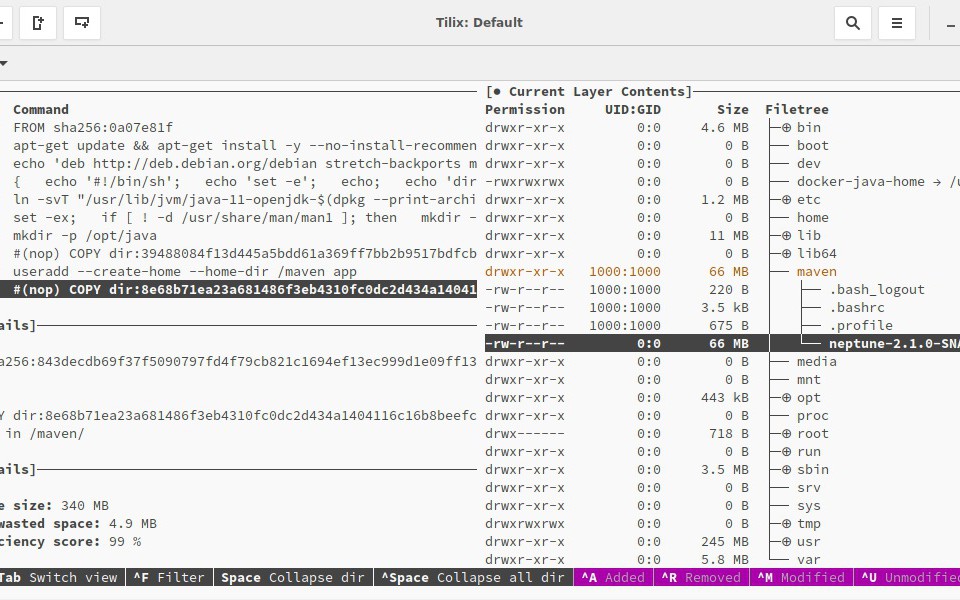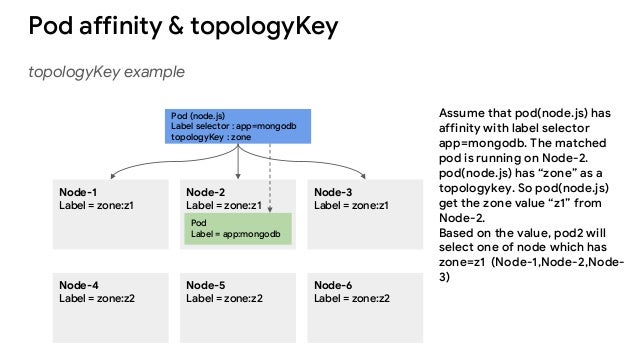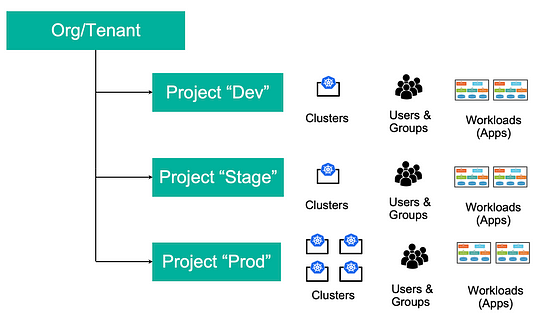40 kubernetes well known labels
Adding Labels & Taint on Node Pool (Node Pool template) You can also create a Node Pool template through the API. You can use the API Explorer for example to interact with our API. To create a Node Pool with a template (labels, annotations, taints…), you have to make a call on: POST /cloud/project/ {serviceName}/kube/ {kubeId}/nodepool. with the following information: kubernetes/well_known_labels.go at master · kubernetes/kubernetes LabelInstanceType = "beta.kubernetes.io/instance-type" LabelInstanceTypeStable = "node.kubernetes.io/instance-type" LabelOSStable = "kubernetes.io/os" LabelArchStable = "kubernetes.io/arch" // LabelWindowsBuild is used on Windows nodes to specify the Windows build number starting with v1.17..
Well-Known Labels, Annotations and Taints | Kubernetes Well-Known Labels, Annotations and Taints. Kubernetes reserves all labels and annotations in the kubernetes.io namespace. This document serves both as a reference to the values and as a coordination point for assigning values. Labels, annotations and taints used on API objects app.kubernetes.io/component. Example: app.kubernetes.io/component: "database"

Kubernetes well known labels
Well-Known Labels, Annotations and Taints - Kubernetes Well-Known Labels, Annotations and Taints. kubernetes.io/arch. Example: kubernetes.io/arch=amd64. Used on: Node. The Kubelet populates this with runtime.GOARCH as defined by Go. This can be ... kubernetes.io/os. beta.kubernetes.io/arch (deprecated) beta.kubernetes.io/os (deprecated) ... Best Practices Guide for Kubernetes Labels and Annotations The main advantage of this metadata is that the Kubernetes machinery automatically fills values of the standard labels and annotations. Thus, it is suggested to use the well-known labels and annotations in your daily operations and client tools, such as Helm, Terraform, or kubectl. Use Labels for Release Management Kubernetes: Evenly Distribution of Pods Across Cluster Nodes In order to distribute pods evenly across all cluster worker nodes in an absolute even manner, we can use the well-known node label called kubernetes.io/hostname as a topology domain, which ...
Kubernetes well known labels. Use labels in an Azure Kubernetes Service (AKS) cluster - Azure ... Specify the --node-labels parameter to set your labels. Labels must be a key/value pair and have a valid syntax. Azure CLI Copy Try It az aks create \ --resource-group myResourceGroup \ --name myAKSCluster \ --node-count 2 \ --nodepool-labels dept=IT costcenter=9000 Verify the labels were set by running kubectl get nodes --show-labels. Bash Copy Concepts | Karpenter While using Kubernetes well-known labels, the provisioner can set some values that are specific to the cloud provider. So, for example, to include a certain instance type, you could use the Kubernetes label node.kubernetes.io/instance-type, but set its value to an AWS instance type (such as m5.large or m5.2xlarge ). Kubernetes cluster autoscaler Documentation | Karpenter These can be arbitrary labels you define, Kubernetes well-known labels, or Karpenter labels. Node affinity ( NodeAffinity ): Set nodeAffinity to have the Pod run on nodes that have matching nodeSelectorTerms set or not set. Matching affinity can be a particular operating system or zone. Recommended Labels | Kubernetes Recommended Labels You can visualize and manage Kubernetes objects with more tools than kubectl and the dashboard. A common set of labels allows tools to work interoperably, describing objects in a common manner that all tools can understand.
api/well_known_labels.go at master · kubernetes/api · GitHub LabelHostname = "kubernetes.io/hostname" LabelTopologyZone = "topology.kubernetes.io/zone" LabelTopologyRegion = "topology.kubernetes.io/region" // These label have been deprecated since 1.17, but will be supported for // the foreseeable future, to accommodate things like long-lived PVs that // use them. How To Use Let's Encrypt on Kubernetes to Automatically ... - Runnablog It can be complicated to set up, but Let's Encrypt helps solve this problem by providing free SSL/TLS certificates and an API to generate these certificates. Kubernetes allows you to define your application runtime, networking, and allows you to define your infrastructure declaratively through code; making it easier to maintain, review, and ... Kubernetes: Evenly Distribution of Pods Across Cluster Nodes In order to distribute pods evenly across all cluster worker nodes in an absolute even manner, we can use the well-known node label called kubernetes.io/hostname as a topology domain, which ... Best Practices Guide for Kubernetes Labels and Annotations The main advantage of this metadata is that the Kubernetes machinery automatically fills values of the standard labels and annotations. Thus, it is suggested to use the well-known labels and annotations in your daily operations and client tools, such as Helm, Terraform, or kubectl. Use Labels for Release Management
Well-Known Labels, Annotations and Taints - Kubernetes Well-Known Labels, Annotations and Taints. kubernetes.io/arch. Example: kubernetes.io/arch=amd64. Used on: Node. The Kubelet populates this with runtime.GOARCH as defined by Go. This can be ... kubernetes.io/os. beta.kubernetes.io/arch (deprecated) beta.kubernetes.io/os (deprecated) ...













Post a Comment for "40 kubernetes well known labels"